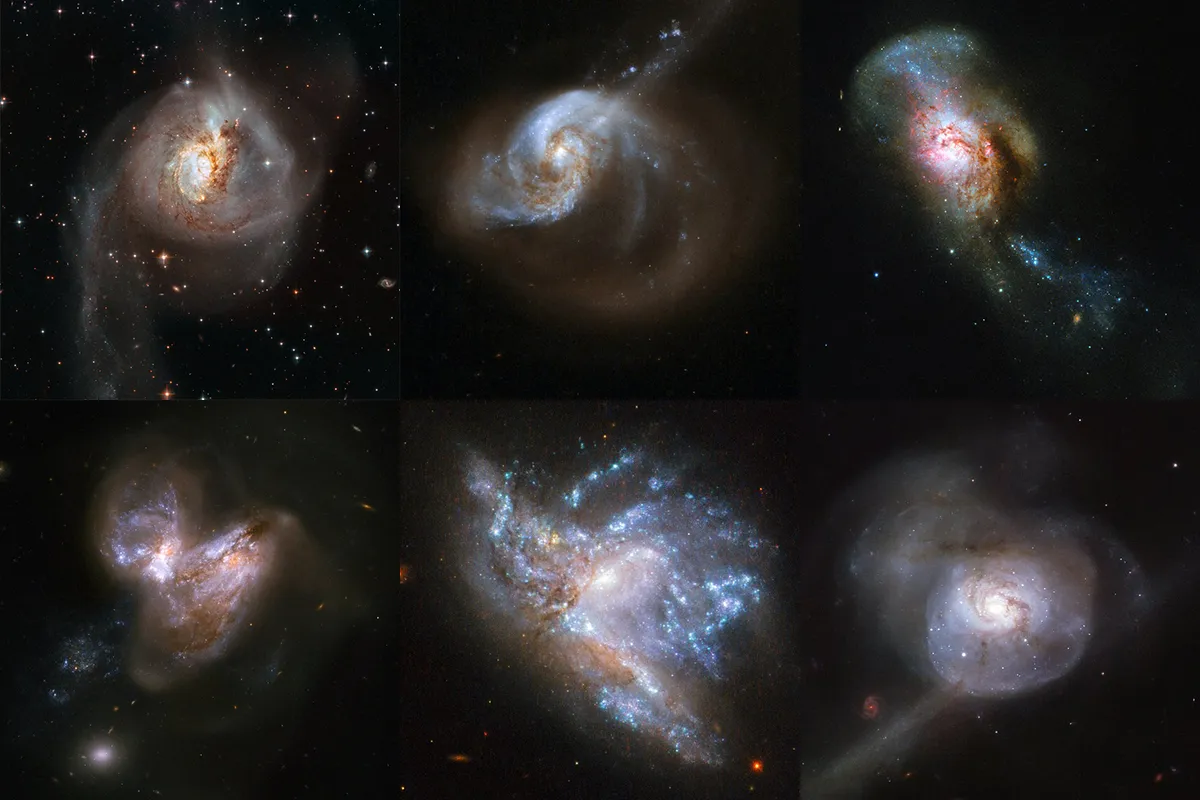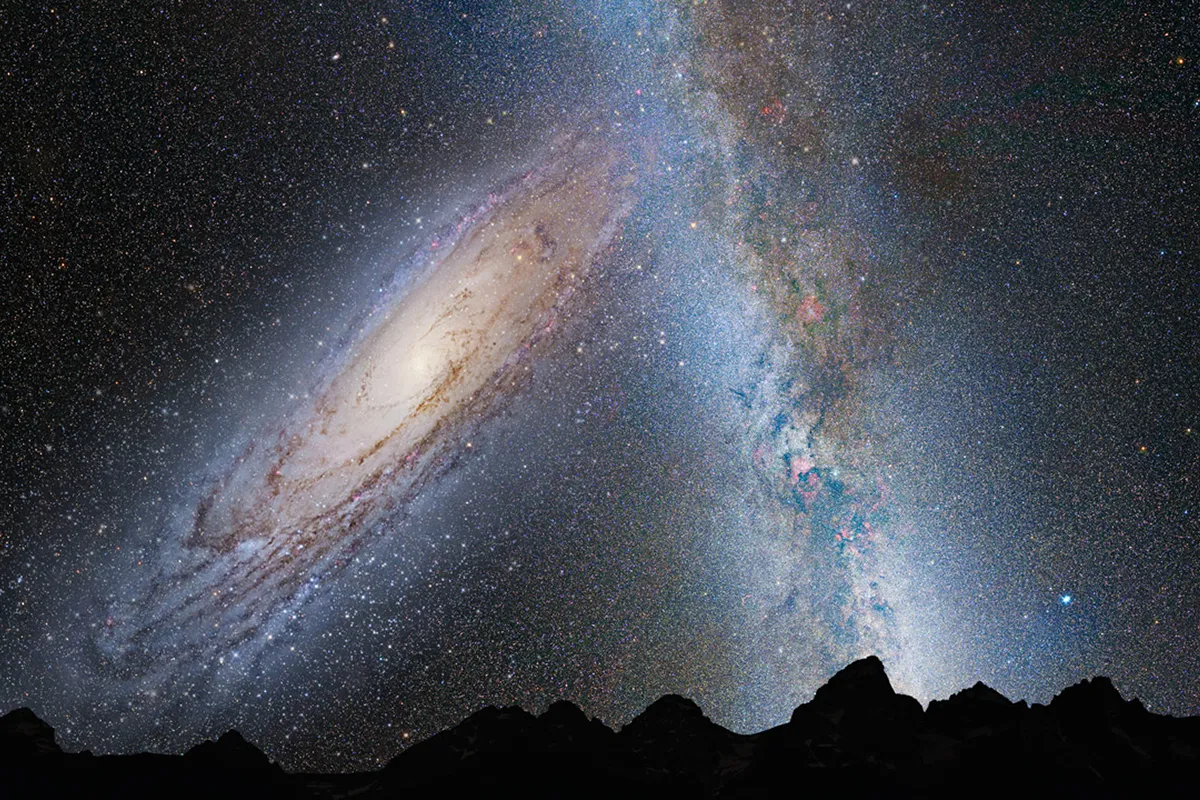The Hubble Space Telescope has captured the aftermath of a galaxy collision reminiscent of an arrow firing into a bullseye.
Enormous galaxy LEDA 1313424 is rippling from the aftermath of a much smaller blue dwarf galaxy firing through its heart.
The result is 9 star-filled rings surrounding the galaxy.

Discovering the Bullseye Galaxy
"This was a serendipitous discovery," says Imad Pasha, lead researcher of the study and a doctoral student at Yale University in New Haven, Connecticut.
"I was looking at a ground-based imaging survey and when I saw a galaxy with several clear rings, I was immediately drawn to it. I had to stop to investigate it."
The team observed the galaxy using the Hubble Space Telescope and were able to spot 8 rings in total, and a further 9th ring was confirmed using the ground-based W. M. Keck Observatory in Hawaii.
They nicknamed the galaxy the 'Bullseye'.

Shot through the heart
Using both Hubble and Keck, the astronomers followed up to get a closer look at the Bullseye Galaxy, and found the culprit was a blue dwarf galaxy, which can be seen to the centre-left.
This dwarf galaxy shot like an arrow through the centre of the Bullseye 50 million years ago, leaving rippling rings separated by a distance of 130,000 lightyears.
"We’re catching the Bullseye at a very special moment in time," says Pieter G. van Dokkum, a co-author of the new study and a professor at Yale.
"There's a very narrow window after the impact when a galaxy like this would have so many rings."

Wait... galaxies collide?
It's not uncommon for galaxies to collide with one another.
Gravitational interactions between galaxies can cause a tug of war between two or more, causing them to skim past each other dangerously close, or even collide entirely.
While the distances between the individual stars in galaxies mean the stars themselves are unlikely to collide with each other, the sheer energy of the gravitational forces at play causes cosmic dust and gas to be churned up, and can lead to new bouts of energetic star formation.
In fact, our own galaxy the Milky Way is set to collide with our neighbour the Andromeda Galaxy, in an event dubbed the 'Andromeda Milky Way collision'.

That said, what has happened in the case of the Bullseye Galaxy is extremely rare.
The smaller blue dwarf galaxy has fired straight through the centre of the bigger galaxy.
And the Bullseye is a huge galaxy. At 250,000 lightyears in diameter, it's 2.5 times as wide as the Milky Way.
The blue dwarf's journey through the heart of the Bullseye Galaxy has precipitated a new bout of star formation.
And the team think there could even be a 10th ring, which has rippled far beyond Hubble's view.
The researchers used Hubble to pinpoint the location of most of the rings, since many are piled up at the centre.
"This would have been impossible without Hubble," Pasha says.

Solving a mystery
As well as being an amazing story with an amazing image, these observations are helping astronomers learn more about galaxy collisions and their role in the evolution of galaxies.
Pasha found the galaxy's rings seem to have moved outward as predicted by theoretical models.
"That theory was developed for the day that someone saw so many rings," van Dokkum says.
"It is immensely gratifying to confirm this long-standing prediction with the Bullseye galaxy."
"If we were to look down at the galaxy directly, the rings would look circular, with rings bunched up at the centre and gradually becoming more spaced out the farther out they are," Pasha says.
Just like when a stone is thrown into a pond, the ripples are spreading out wider, the further away they get from the point of impact.
The astronomers think the first two rings in the Bullseye Galaxy formed quickly, then spread out in wider circles.
They say individual stars' orbits were largely undisturbed, but groups of stars piled up over millions of years to form the rings.
This data can now be used to improve models showing how the galaxy will continue to evolve over billions of years.
The team's paper was published on the February 4, 2025 in The Astrophysical Journal Letters.
